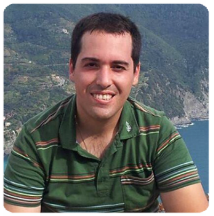Day 2 :
Keynote Forum
Ramel A Carlos
The Neurology Clinic, USA
Keynote: Obstructive sleep apnea in various cognitive disorders
Time : 10.00-11.00

Biography:
Abstract:
Keynote Forum
Kumaar Bagrodiya
Neuroleap, India
Keynote: Using brain computer interface for improved neural activity
Time : 11.30-12.30

Biography:
Abstract:
TBA
- Neurology | Neuroimaging | Neurosurgery | Neurophysiology | Neurochemistry | Neuropsychiatry and Mental Health | Neurological Disorders | Developmental Neurology
Location: Conference Hall

Chair
Sarwar Jamil Siddiqui
The Aga Khan University, Pakistan
Session Introduction
Mohammad Ghadirvasfi
Iran University of Medical Sciences, Iran
Title: Evaluation of Transcranial Magnetic Stimulation (rTMS) on depression and craving in patients with methamphetamine dependence
Biography:
Mohammad Ghadirivasfi was graduated in psychiatry from Iran University of Medical Sciences (IUMS), Iran. He was the head of Iran Mental Hospital for 13 years and achieved years of experience in research, teaching and administration in hospital and during this period, his effort was highly effective to establish Iranian DNA Bank for Genetic and Epigenetic Studies in Psychiatric Disorders. He is interested in improving education of medical student and residency in psychiatry. He has academic publications and is one of the authors of the Iranian curriculum of general psychiatry, addiction and risky behavior fellowship and the sleep textbook (in Persian) sponsored by IUMS (Iran University of Medical Sciences). He was the secretary of 5th Basic and clinical Neuroscience Congress in 2016 Tehran, Iran.
Abstract:
Nataliia O Melnyk
Bogomolets National Medical University, Ukraine
Title: Changers in structure of neurons of Central Nervous System on different experimental models of demyelination and remyelination
Biography:
Abstract:
Sarwar Jamil Siddiqui
The Aga Khan Ãœniversity, Pakistan
Title: Neurology training in Pakistan, a resource limited country - Opportunities and challenges
Biography:
Abstract:
Shlomi Hanassy
Hanassy R&D Ltd., Israel
Title: Introduction to octopus arm motor control neuro-biology and biomimetics

Biography:
Abstract:
Biography:
Abstract:
Rahul Srinivasan
Medical Trust Hospital, India
Title: Cervical perimedullary AVF with feeding artery aneurysm - Endovascular treatment with review of literature
Biography:
Abstract:
- Molecular and Cellular Neurology | Behavioural Neurology | Pediatric Neurology | Neuroendocrinology | Computational Neurology | Neuroinformatics | Neuroopthalmology
Location: Conference Hall
Session Introduction
Shlomi Hanassy
Hanassy R&D Ltd, Israel
Title: A model for the dynamics of stabilizing biological systems
Biography:
Abstract:
Mohammad Ghadirivasfi
Iran University of Medical Sciences, Iran
Title: Neurocognitive reward circuitry system in addiction
Biography:
Abstract:
Mihai Stelian Moreanu & Marina Cozma
University of Medicine and Pharmacy “Carol Davilaâ€, Romania
Title: Establishing the proper approach to an effective surgical treatment for the Meningioma
Biography:
